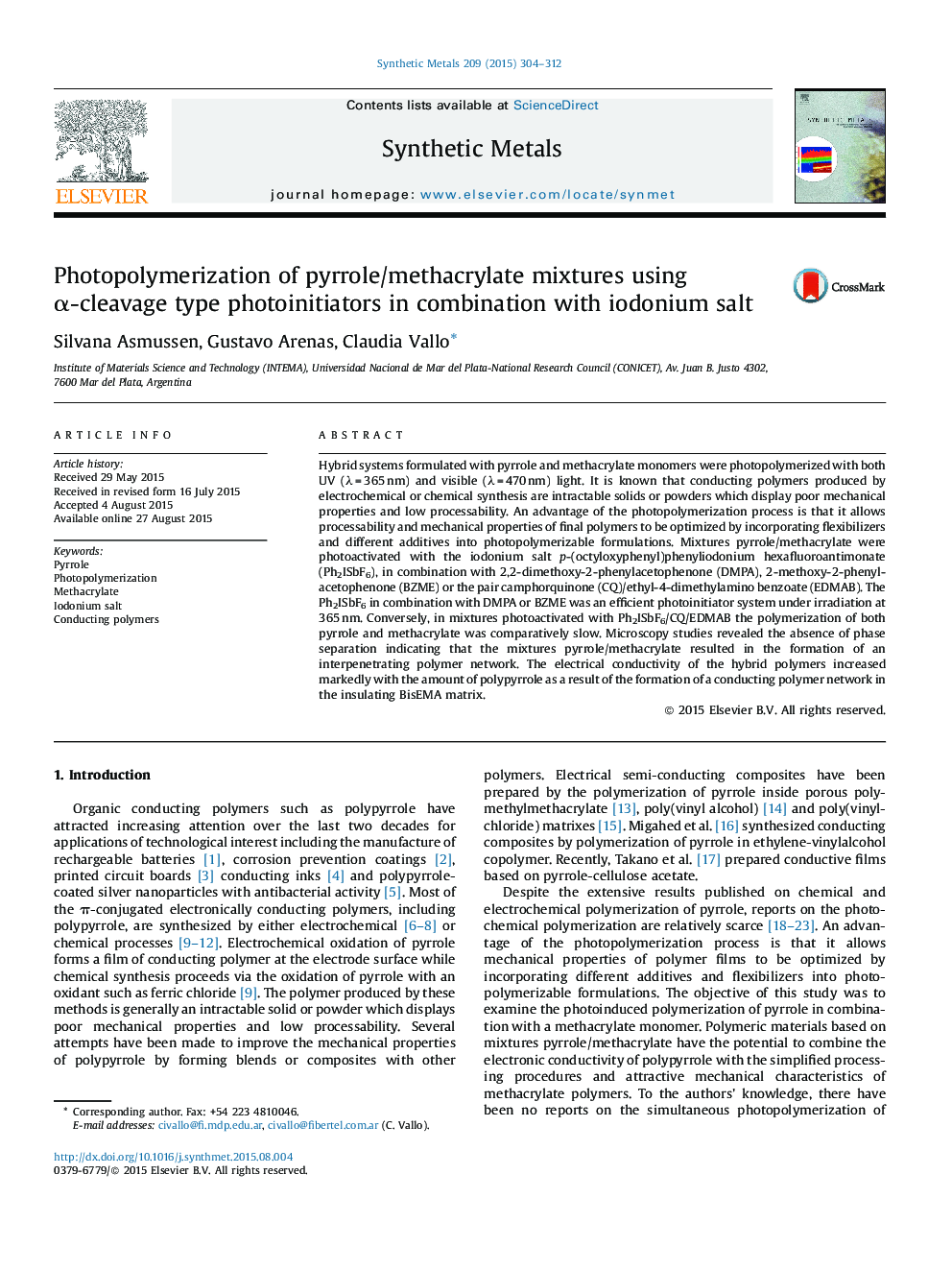| کد مقاله | کد نشریه | سال انتشار | مقاله انگلیسی | نسخه تمام متن |
|---|---|---|---|---|
| 1440507 | 1509368 | 2015 | 9 صفحه PDF | دانلود رایگان |

• Pyrrole (Py) was photopolymerized in mixtures with a methacrylate monomer.
• α-Cleavage type photoinitiators were used in combination with an iodonium salt.
• Irradiation with 365-nm light enabled the polymerization of 2-mm thick layers.
• Phase separation did not occur in mixtures pyrrole/methacrylate.
• The electrical conductivity increased markedly in the mixture containing 50 wt% Py.
Hybrid systems formulated with pyrrole and methacrylate monomers were photopolymerized with both UV (λ = 365 nm) and visible (λ = 470 nm) light. It is known that conducting polymers produced by electrochemical or chemical synthesis are intractable solids or powders which display poor mechanical properties and low processability. An advantage of the photopolymerization process is that it allows processability and mechanical properties of final polymers to be optimized by incorporating flexibilizers and different additives into photopolymerizable formulations. Mixtures pyrrole/methacrylate were photoactivated with the iodonium salt p-(octyloxyphenyl)phenyliodonium hexafluoroantimonate (Ph2ISbF6), in combination with 2,2-dimethoxy-2-phenylacetophenone (DMPA), 2-methoxy-2-phenylacetophenone (BZME) or the pair camphorquinone (CQ)/ethyl-4-dimethylamino benzoate (EDMAB). The Ph2ISbF6 in combination with DMPA or BZME was an efficient photoinitiator system under irradiation at 365 nm. Conversely, in mixtures photoactivated with Ph2ISbF6/CQ/EDMAB the polymerization of both pyrrole and methacrylate was comparatively slow. Microscopy studies revealed the absence of phase separation indicating that the mixtures pyrrole/methacrylate resulted in the formation of an interpenetrating polymer network. The electrical conductivity of the hybrid polymers increased markedly with the amount of polypyrrole as a result of the formation of a conducting polymer network in the insulating BisEMA matrix.
Figure optionsDownload as PowerPoint slide
Journal: Synthetic Metals - Volume 209, November 2015, Pages 304–312